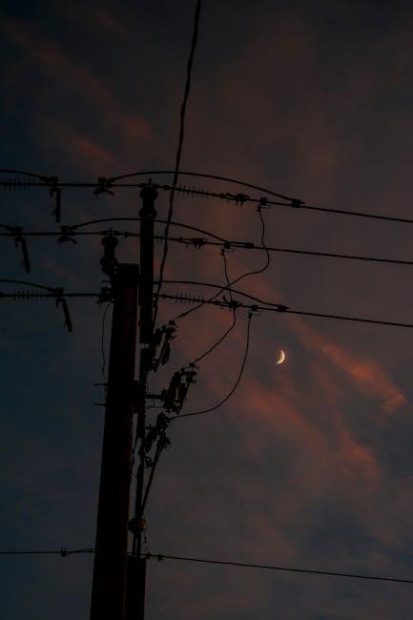Neil Gaiman’s Norse Mythology is a captivating retelling of ancient Norse myths, blending timeless stories with vivid storytelling. Inspired by his lifelong fascination with mythology, Gaiman crafts a thrilling narrative that explores the gods, giants, and cosmic events of Norse tradition. This book offers a fresh yet faithful adaptation, making these myths accessible to both new readers and those familiar with the original tales. Its release in 2017 marked a significant contribution to the revival of Norse mythology’s popularity, resonating with audiences worldwide as a modern classic.
Overview of the Book
Norse Mythology by Neil Gaiman is a captivating retelling of ancient Norse myths, offering a fresh perspective on timeless stories. Published in 2017, the book delves into the origins of the world, the antics of gods like Odin and Thor, and the inevitable doom of Ragnarok. Gaiman’s masterful storytelling weaves these tales into a cohesive narrative, blending humor, drama, and cosmic wonder. The book serves as both an introduction for newcomers and a revitalizing reinterpretation for those familiar with the original myths, showcasing Gaiman’s signature charm and imaginative depth.
Gaiman’s Inspiration and Connection to Norse Mythology
Neil Gaiman’s fascination with Norse mythology began in childhood, captivated by the gods, giants, and cosmic tales. His love for Tolkien and comic book interpretations of Norse legends further deepened his connection. Gaiman’s retelling stays true to the original myths while infusing them with his unique storytelling flair. His ability to balance faithfulness with creativity highlights his enduring respect for the source material. This connection is evident in his vivid portrayal of Odin, Thor, and Loki, making the myths resonate with both new readers and those familiar with the legends.
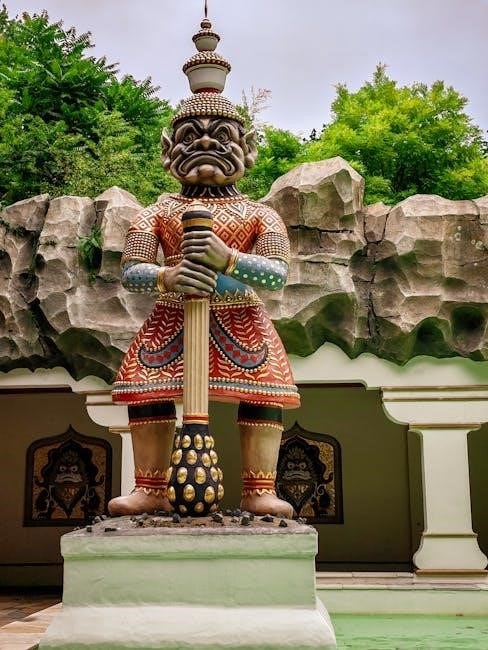
Themes and Motifs in “Norse Mythology”
Norse Mythology explores cosmic order vs. chaos, the flawed nature of gods, and the inevitability of destiny, weaving these themes into a rich tapestry of fate and transformation.
The Structure of the Cosmos in Norse Mythology
Norse cosmology, as depicted by Gaiman, centers on Yggdrasil, the World Tree, connecting nine realms. These include Asgard (home of the gods), Midgard (human world), and Helheim. The structure reflects a delicate balance, with forces of chaos and order intertwined. Yggdrasil symbolizes life and destiny, while the Well of Urd embodies time and fate. This intricate design underscores the interconnectedness of all existence, creating a vivid, layered universe that Gaiman brings to life with remarkable clarity and depth.
The Nature of the Gods and Their Flaws
Gaiman’s portrayal of Norse gods reveals their human-like imperfections. Odin, the All-Father, is wise yet cunning and often ruthless in pursuit of power. Thor, though mighty, displays simplicity and naivety. Loki, the trickster, embodies complexity, vacillating between loyalty and malice. These flaws make the gods relatable and their stories compelling. Gaiman’s approach highlights their vulnerabilities, emphasizing that even divine beings are subject to fate and fallibility, adding depth to the mythological narrative.
Mortality, Destiny, and the Concept of Ragnarok
Gaiman masterfully weaves the themes of mortality and destiny in Norse Mythology, culminating in Ragnarok, the end of the world. The gods, despite their power, are bound by fate and face inevitable doom. Ragnarok symbolizes the cyclical nature of existence—destruction followed by rebirth. This concept underscores the transient nature of even the divine, resonating with readers’ understanding of life’s impermanence. Gaiman’s vivid depiction of Ragnarok captures the grandeur and inevitability of the end, making it a haunting yet profound conclusion to the myths.
The Pantheon of Norse Gods in Gaiman’s Retelling
Gaiman vividly portrays the Norse gods, capturing their complex personalities and divine essence. Odin’s wisdom, Thor’s strength, and Loki’s cunning shine in his masterful storytelling.
Odin: The All-Father and His Wisdom
Odin, the All-Father, emerges as a central figure in Gaiman’s retelling, embodying wisdom, cunning, and leadership. As the highest of the gods, Odin’s daring quests and sacrifices, such as hanging from Yggdrasil to gain knowledge, highlight his relentless pursuit of wisdom. His role as a strategist and ruler underscores his complexity, blending authority with vulnerability. Gaiman’s portrayal captures Odin’s enigmatic nature, making him a compelling and multifaceted character in the Norse pantheon, resonating deeply with readers familiar with his significance in mythology and Gaiman’s other works.
Thor: The God of Thunder and His Hammer Mjolnir
Thor, the mighty God of Thunder, is portrayed by Gaiman as a figure of immense strength and unwavering courage. His iconic hammer, Mjolnir, symbolizes both his power and his identity. Gaiman vividly recounts Thor’s adventures, such as the theft of Mjolnir and its dramatic recovery, showcasing his determination and pride. Despite his bravado, Thor’s character is nuanced, revealing a god who balances confidence with a deep sense of duty. His stories resonate with readers, making him one of the most beloved and relatable figures in Gaiman’s retelling of Norse mythology.
Loki: The Trickster and His Complex Personality
Loki, the enigmatic trickster, is masterfully portrayed by Gaiman as a figure of both charm and malice. His complex character oscillates between loyalty and betrayal, making him one of the most intriguing gods. Gaiman explores Loki’s cunning nature and his pivotal role in shaping Norse mythology, from his clever tricks to his ultimate betrayal leading to Ragnarok. Despite his flaws, Loki’s charisma and intelligence captivate readers, adding depth to the narrative and highlighting the duality of his character in Gaiman’s vivid retelling of the myths.
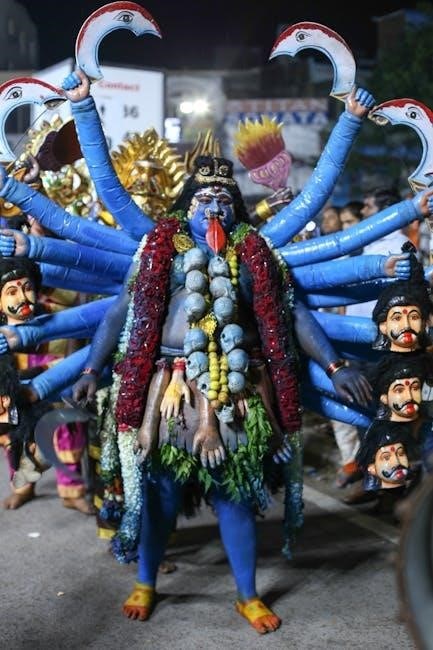
Major Events and Stories Retold
Gaiman vividly retells the creation of the world, the theft of Thor’s hammer, and the impending Ragnarok, weaving these ancient tales into a compelling narrative.
The Creation of the World and Yggdrasil
Gaiman masterfully recounts the birth of the cosmos, beginning with the primordial void and the emergence of Yggdrasil, the sacred ash tree. He vividly describes the nine worlds, from Asgard to Hel, and the origins of the gods, giants, and humans. The mead of poetry, crafted from the blood of the wise Kvasir, is a central element, symbolizing creativity and wisdom. Gaiman’s retelling captures the intricate beauty of these ancient myths, making them accessible and engaging for modern readers while staying true to their original essence.
The Theft of Thor’s Hammer and Its Recovery
Gaiman vividly retells the tale of Thor’s hammer, Mjolnir, being stolen, exploring the chaos and humor that ensue. Loki’s cunning shines as he devises a plan, leading Thor to disguise himself as Freyja to retrieve his weapon. The story highlights the gods’ vulnerabilities and Loki’s duplicitous nature, offering a blend of humor and insight into their flaws. This narrative not only entertains but also deepens the understanding of the complex dynamics within the Norse pantheon, showcasing Gaiman’s skill in balancing humor with depth.
The Story of Ragnarok and the End of the World
Gaiman masterfully recounts Ragnarok, the cataclysmic end of the world in Norse mythology. The story unfolds with ominous prophecies and the release of monstrous beings like Fenrir and Jormungandr. As the gods face their destinies, Odin falls to Fenrir, and Thor succumbs to the Midgard Serpent. Despite the tragedy, Ragnarok also brings renewal, as the world rises anew from the ashes. Gaiman’s vivid storytelling captures the epic scale and emotional depth of this ancient tale, making it resonate with readers seeking both drama and hope.
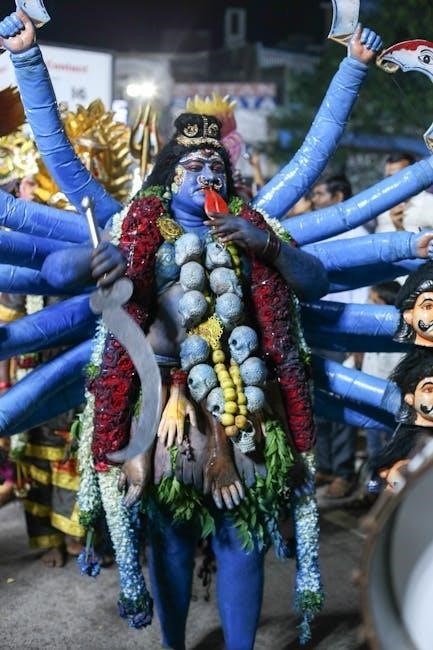
Cultural and Historical Context
Gaiman’s Norse Mythology roots itself in the rich cultural tapestry of ancient Scandinavia, drawing from the Poetic Edda and Prose Edda. These tales, passed down through centuries, reflect the values and beliefs of Viking-age societies, offering insights into their worldview. By retelling these myths, Gaiman bridges the past and present, making them accessible to modern readers while preserving their historical essence.
The Influence of Norse Mythology on Modern Culture
Norse mythology’s impact on modern culture is profound, inspiring works like Marvel’s Thor and Game of Thrones. Gaiman’s retelling has further popularized these myths, introducing them to new audiences; The timeless themes of heroism, fate, and cosmic drama resonate across media, from literature to film. Gaiman’s adaptation has played a significant role in this resurgence, making the ancient tales relatable and engaging for contemporary readers while preserving their historical and cultural significance.
Gaiman’s Unique Approach to Retelling Ancient Myths
Neil Gaiman’s retelling of Norse myths in Norse Mythology balances fidelity to the original tales with creative storytelling. His approach simplifies complex narratives, making them accessible without losing their essence. Gaiman’s prose is both evocative and concise, capturing the grandeur and humor of the myths. By structuring the book as a cohesive story arc, he transforms fragmented myths into a unified narrative, appealing to both casual readers and scholars. This approach ensures the myths feel fresh yet rooted in tradition, reflecting Gaiman’s mastery of blending old and new.
Comparisons with Other Mythological Retellings
Gaiman’s Norse Mythology stands out among mythological retellings for its balance of authenticity and originality. Unlike adaptations that focus solely on action or drama, Gaiman preserves the quirky humor and unexpected twists of the original myths. His work contrasts with more academic retellings, offering a narrative that flows like a novel. While other authors might modernize myths heavily, Gaiman respects their roots, creating a version that feels both timeless and contemporary. This approach sets his retelling apart, appealing to fans of mythology and fiction alike.
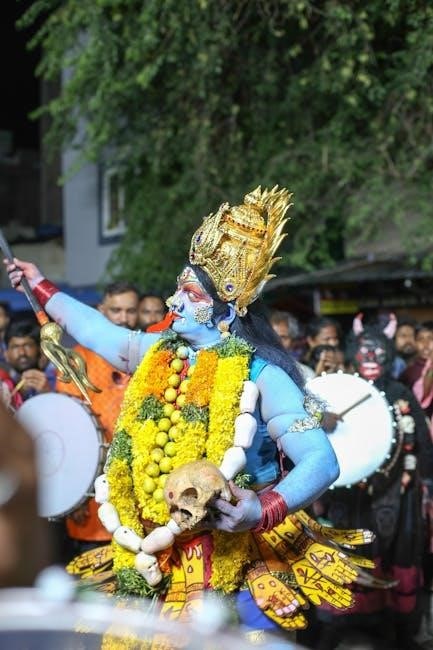
Reception and Reviews
Norse Mythology received critical acclaim, topping U.S. bestseller lists and earning widespread praise. Readers and critics alike celebrated its vivid storytelling and faithful yet creative approach, making it a ripping good read for both newcomers and seasoned fans of mythology.
Critical Acclaim and Bestseller Status
Neil Gaiman’s Norse Mythology achieved remarkable success, topping bestseller lists and earning widespread critical acclaim. Reviewers praised Gaiman’s ability to balance faithfulness to the original myths with creative storytelling, making the ancient tales fresh and engaging. The book’s vivid prose and compelling narratives resonated with readers, solidifying its place as a modern classic in the realm of mythological retellings. Its bestseller status was further cemented by Gaiman’s loyal fanbase and the broader appeal of Norse mythology in popular culture.
Reader Responses and Popularity
Readers enthusiastically embraced Norse Mythology, praising its accessibility and Gaiman’s storytelling prowess. The book appealed to both newcomers and aficionados of Norse myths, sparking lively discussions online and in book clubs. Its popularity was evident in strong sales and positive reviews, with many highlighting its engaging narrative style. The seamless blend of mythology and modern prose made it a favorite, further enhancing Gaiman’s reputation as a masterful storyteller capable of captivating diverse audiences with timeless tales.
Awards and Recognitions
Norse Mythology has garnered significant acclaim, topping U.S. bestseller lists and earning widespread critical praise. While specific awards for this work are not detailed, its success underscores Gaiman’s mastery of mythological storytelling. The book’s ability to captivate readers and its faithful yet creative retelling of ancient myths have solidified its place in contemporary literature, further cementing Gaiman’s legacy as a storyteller of unparalleled skill and imagination.
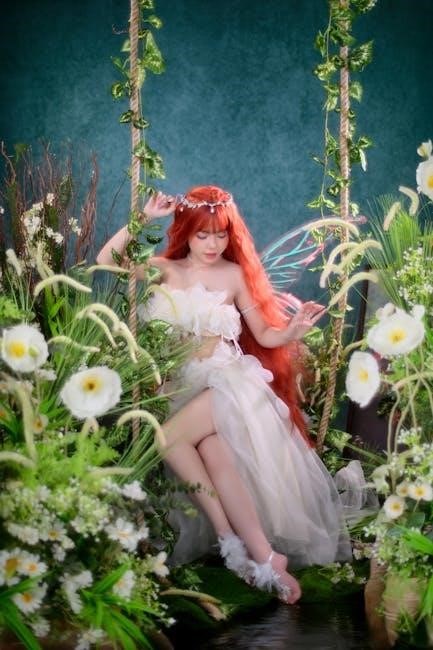
Neil Gaiman’s Writing Style
Gaiman’s prose in Norse Mythology is clear, engaging, and richly imaginative, balancing simplicity with depth. His storytelling weaves ancient tales into a modern, accessible narrative, captivating readers of all levels.
The Use of Language and Narrative Technique
Gaiman’s prose in Norse Mythology is marked by simplicity, clarity, and a lyrical quality that brings ancient tales to life. His narrative technique blends traditional storytelling with modern accessibility, ensuring the myths resonate with contemporary readers. The use of direct dialogue and vivid descriptions creates a dynamic, engaging atmosphere. Gaiman’s ability to balance faithfulness to the source material with creative reinterpretation highlights his mastery of storytelling. His language, while straightforward, carries a rhythmic and poetic charm, making the myths feel both timeless and fresh.
Balancing Faithfulness to Source Material with Creativity
Gaiman skillfully blends fidelity to original Norse myths with imaginative reinterpretation, ensuring the stories remain authentic yet fresh. He stays true to the core themes and characters while infusing them with his unique voice. By streamlining complex narratives and enhancing emotional depth, Gaiman makes the myths accessible without losing their essence. This delicate balance between tradition and innovation allows readers to connect with the timeless stories while experiencing them through a modern lens, showcasing Gaiman’s respect for the source material and his creative vision.
The Appeal to Both New and Seasoned Readers
Gaiman’s Norse Mythology captivates both newcomers and enthusiasts of mythology. For new readers, the book offers an accessible introduction to Norse myths, presented in Gaiman’s signature engaging style. Seasoned readers appreciate the depth and creativity he brings to familiar tales, enhancing their understanding without straying from the source material. The balance of simplicity and richness ensures the book appeals to a broad audience, making it a timeless read for anyone intrigued by mythology, whether discovering it for the first time or revisiting beloved stories.
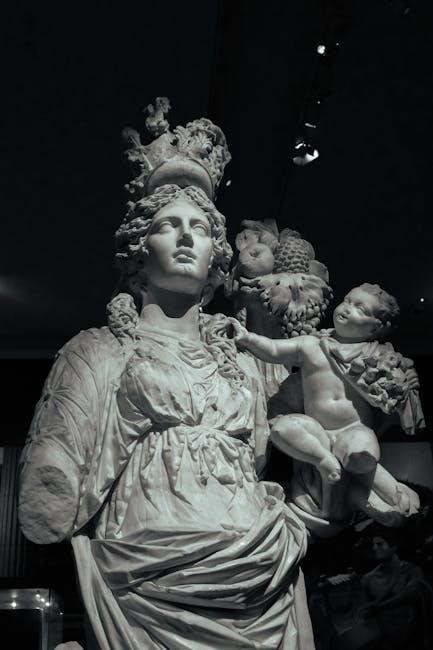
Personal Touches and Interpretations
Gaiman’s unique voice shines in his retelling, blending traditional myths with modern flair. His interpretations breathe new life into ancient stories, making them relatable and compelling.

Gaiman’s Favorite Characters and Stories
Gaiman has expressed a deep fondness for Odin, the All-Father, highlighting his wisdom and complexity. Loki, with his cunning and unpredictability, also captivates Gaiman, as seen in his nuanced portrayal. The story of Ragnarok, the end of the world, is another favorite, offering a dramatic climax to the Norse saga. Gaiman’s storytelling brings these characters and tales to life, blending simplicity with depth, making the myths relatable and engaging for modern readers while staying true to their original essence.
Unique Perspectives on Loki and Other Figures
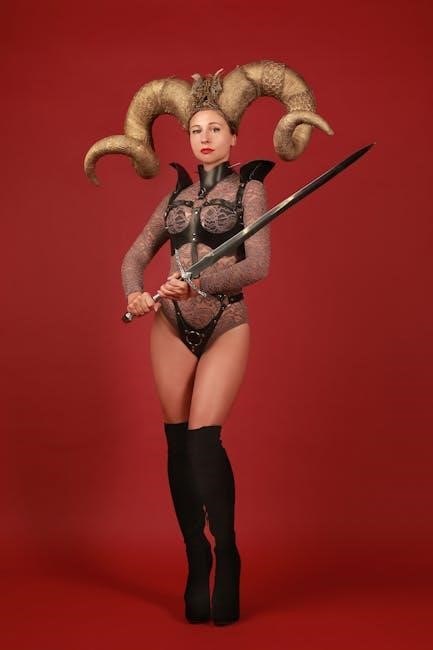
Gaiman offers a fresh, nuanced portrayal of Loki, capturing his complexity as a trickster with a mix of charm and malice. Unlike traditional depictions, Gaiman’s Loki is multidimensional, evoking both frustration and sympathy; Similarly, he reimagines Odin and Thor, highlighting their vulnerabilities and quirks, making them relatable. Gaiman’s storytelling humanizes these figures, blending their mythological grandeur with everyday emotions, creating a modern yet faithful interpretation that resonates deeply with readers. His unique voice breathes new life into these ancient characters, making them unforgettable.
Modernizing Ancient Tales for Contemporary Audiences
Gaiman masterfully adapts Norse myths for modern readers, blending ancient themes with a contemporary narrative style. His storytelling retains the original tales’ essence while making them accessible and engaging for today’s audience. By simplifying complex mythological concepts and infusing them with relatable emotions, Gaiman bridges the gap between the past and present. This approach ensures that the timeless stories of Norse mythology resonate with both new and seasoned readers, showcasing their enduring relevance in a modern world.
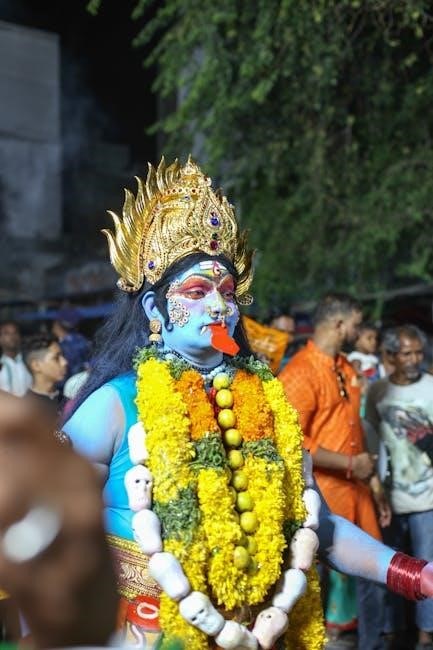
Legacy and Impact of “Norse Mythology”
Norse Mythology has become a cultural phenomenon, topping bestseller lists and inspiring new adaptations. Its vivid storytelling has reignited global interest in Norse tales, ensuring their timeless appeal.
Contribution to the Revival of Interest in Norse Mythology
Gaiman’s Norse Mythology has significantly revitalized interest in ancient Norse tales, introducing them to a modern audience. By blending authentic mythological elements with his signature storytelling, Gaiman has made these stories accessible and engaging for readers worldwide. The book’s success has inspired new adaptations, films, and literature, ensuring the Norse myths remain relevant in contemporary culture. Its impact is evident in the surge of popular media drawing from these tales, cementing their place in today’s cultural landscape.
Influence on Literature and Popular Media
Gaiman’s Norse Mythology has profoundly influenced contemporary literature and media, inspiring new adaptations and creative works. The book’s vivid storytelling has sparked interest in Norse themes across various platforms, from television shows like Thor and Game of Thrones to films and video games. Authors worldwide now draw inspiration from Gaiman’s retelling, incorporating Norse elements into their narratives. This cultural resurgence highlights the enduring appeal of these myths, ensuring their relevance in modern storytelling and entertainment.
Future Prospects and Potential Adaptations
Gaiman’s Norse Mythology has sparked interest in potential adaptations, with discussions about TV series or films. Its vivid storytelling and rich characters make it ideal for visual interpretations. Additionally, the book’s success may inspire further literary explorations of Norse themes, attracting new audiences. Gaiman’s involvement in such projects could ensure creative fidelity. The enduring allure of these myths suggests a bright future for adaptations, keeping Norse mythology relevant in modern media and storytelling.
Neil Gaiman’s Norse Mythology stands as a modern classic,
offering timeless tales of gods, giants, and cosmic destiny.
His work continues to captivate readers,
ensuring a lasting legacy in literature and mythology.
Final Thoughts on Gaiman’s “Norse Mythology”
Gaiman’s Norse Mythology masterfully breathes new life into ancient tales,
capturing their essence with a contemporary flair.
His storytelling weaves seamlessly between drama,
humor, and tragedy, making these myths relatable.
Odin’s wisdom, Thor’s strength, and Loki’s cunning
shine through, leaving readers spellbound.
Gaiman’s work not only honors the source material
but also introduces Norse mythology to a new generation.
A must-read for both enthusiasts and newcomers.
The Timeless Appeal of Mythological Stories
Mythological stories captivate audiences with their timeless themes.
Gaiman’s Norse Mythology blends drama, humor, and tragedy,
making ancient tales relatable. His storytelling highlights
universal truths about the human condition,
resonating across generations. The book’s appeal lies in its ability
to connect modern readers with the past.
Gaiman’s work ensures these myths endure,
proving their relevance in contemporary culture.
A must-read for both enthusiasts and newcomers,
it showcases the power of myth to inspire and captivate.
The Enduring Legacy of Neil Gaiman’s Work
Neil Gaiman’s work leaves an indelible mark on literature and popular culture.
His unique storytelling weaves fantasy with relatable human themes,
captivating diverse audiences. Norse Mythology exemplifies his ability
to breathe new life into ancient tales, blending tradition
with modern sensibilities. The book’s success underscores
Gaiman’s legacy as a masterful storyteller, ensuring
his interpretations of Norse myths remain timeless.
His work continues to inspire adaptations and spark
global interest in mythology, cementing his place
as a literary icon for generations to come.
